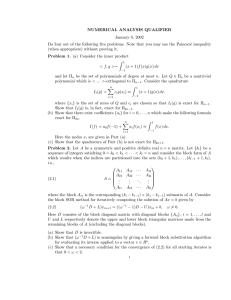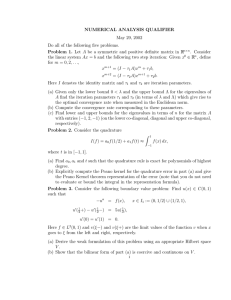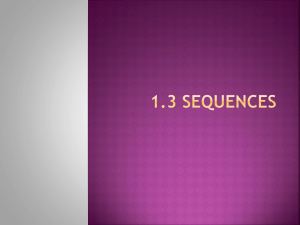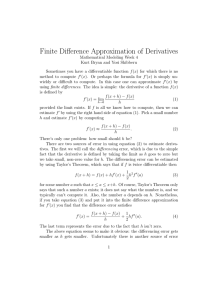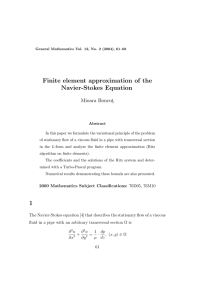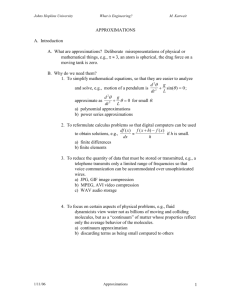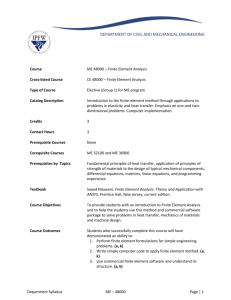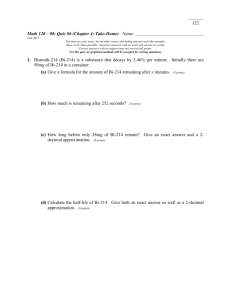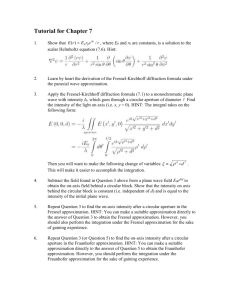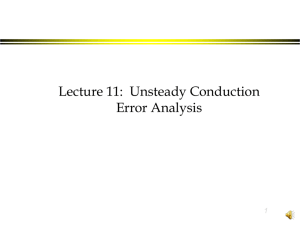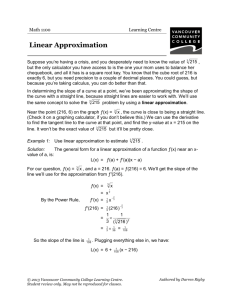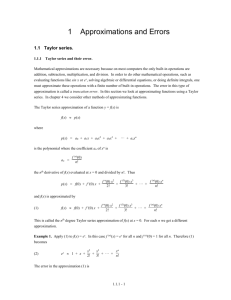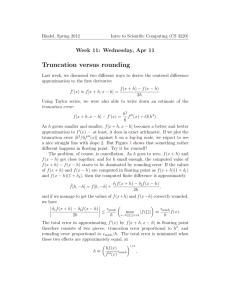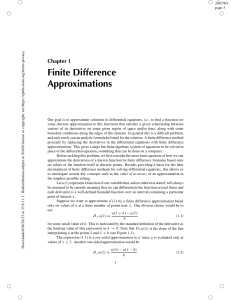HW 6.1
advertisement
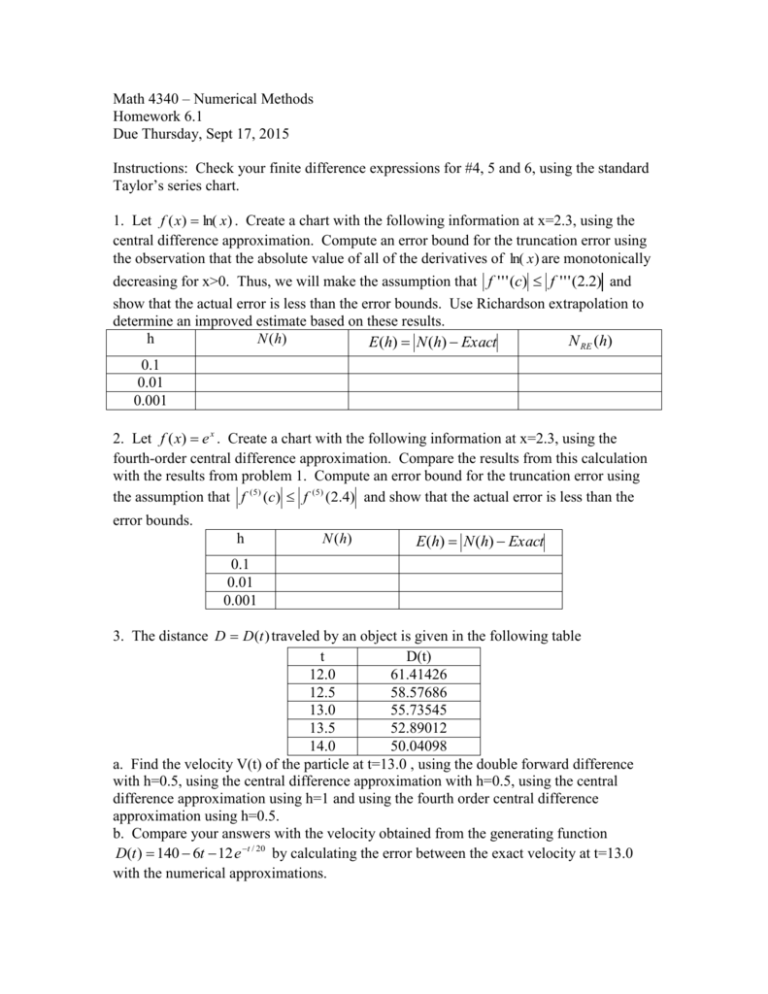
Math 4340 – Numerical Methods Homework 6.1 Due Thursday, Sept 17, 2015 Instructions: Check your finite difference expressions for #4, 5 and 6, using the standard Taylor’s series chart. 1. Let f ( x) ln( x) . Create a chart with the following information at x=2.3, using the central difference approximation. Compute an error bound for the truncation error using the observation that the absolute value of all of the derivatives of ln( x ) are monotonically decreasing for x>0. Thus, we will make the assumption that f ' ' ' (c) f ' ' ' (2.2) and show that the actual error is less than the error bounds. Use Richardson extrapolation to determine an improved estimate based on these results. N (h) h N RE (h) E(h) N (h) Exact 0.1 0.01 0.001 2. Let f ( x) e x . Create a chart with the following information at x=2.3, using the fourth-order central difference approximation. Compare the results from this calculation with the results from problem 1. Compute an error bound for the truncation error using the assumption that f (5) (c) f (5) (2.4) and show that the actual error is less than the error bounds. h N (h) E(h) N (h) Exact 0.1 0.01 0.001 3. The distance D D (t ) traveled by an object is given in the following table t D(t) 12.0 61.41426 12.5 58.57686 13.0 55.73545 13.5 52.89012 14.0 50.04098 a. Find the velocity V(t) of the particle at t=13.0 , using the double forward difference with h=0.5, using the central difference approximation with h=0.5, using the central difference approximation using h=1 and using the fourth order central difference approximation using h=0.5. b. Compare your answers with the velocity obtained from the generating function D(t ) 140 6t 12 e t / 20 by calculating the error between the exact velocity at t=13.0 with the numerical approximations. 4. By considering the Taylor’s series expansion of the finite difference expression for the second derivative, combine the two expressions shown below to generate a finite difference expression for the fourth derivative f x h 2 f x f x h f x 2h 2 f x f x 2h 2 h ( 2h) 2 Check your answer by calculating the leading order error term for the new formula. 5. Combine the following finite difference expressions to generate a third-derivative approximation: f x 2h 4 f x h 3 f x f x 4h 4 f x 2h 3 f x 2h 4h 6. Determine what the following finite difference expressions approximate. What are the orders of accuracy and what are the leading order error terms? f x h 3 f x 3 f x h f x 2h h3 f x 2h 2 f x h 2 f x h f x 2h b. 2h 3 f x 2h 4 f x h 6 f x 4 f x h f x 2h c. h4 a. 7. Improve the order of accuracy of the finite difference expression in 6.a. by using Richardson extrapolation and calculate the order of accuracy and leading order error term of the new formula.
